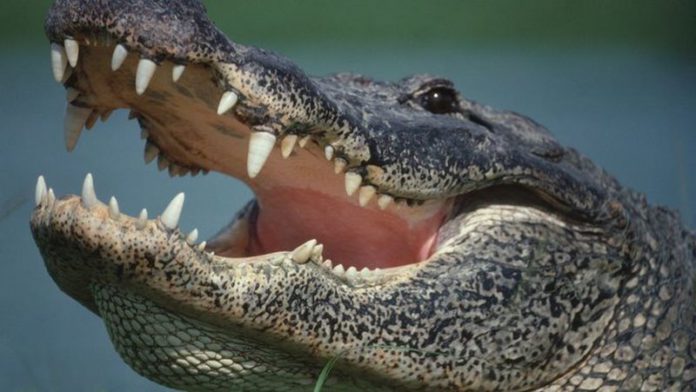Detectives have found human remains inside an alligator believed to have killed a 71-year-old man during Hurricane Ida floodwaters.
The 228kg, 12-foot creature was caught and killed after a search by officials in Louisiana, US, that lasted two weeks.
St. Tammany Parish Sheriff’s Office confirmed on Monday that they had made the grizzly discovery inside the reptile’s stomach.
Tests are being carried out to determine if the remains are that of the missing man.
Timothy Satterlee Sr was last seen on August 30 checking the storm damage outside his home in Slidell, about 35 miles northeast of New Orleans.
The animal attack happened the day after Ida struck, one of the most powerful hurricanes ever to hit the US Gulf Coast.
After slamming into Louisiana it caused devastating flooding in some areas outside a new levee and floodgate system protecting New Orleans.
READ ALSO:
- Jon Benjamin reacts to ‘do or die’ comment
- Two die as church building collapses during service [Photos]
- I want to give him a gift – Sarkodie looks for 50-year-old farmer who raps his songs flawlessly [Video]
An alligator “weighing a startling 504lbs” was caught on Monday in a trap set by two Louisiana Department of Wildlife licensed nuisance hunters, according to a statement from St. Tammany Parish Sheriff’s Office.
“Once the alligator was searched, it was discovered to have what appears to be human remains inside its stomach,” the sheriff’s office said.
“Investigators will work with the St. Tammany Parish Coroner’s Office to verify those remains belong to Timothy Satterlee.”
Wildlife agents were scouring the area in air boats on Saturday when a drone they had deployed spotted a “rather large” alligator not far from the Satterlee home, said Captain Lance Vitter, a spokesperson for the sheriff’s office.
The agents set traps, which proved successful on Monday.
They then euthanised and cut open the alligator “and that’s when they discovered the body parts”, Vitter said. “It was the upper parts of a human body.”
The Satterlee home is not far from an area frequented by tourists who visit for swamp tours promising sightings of alligators and other wildlife, Vitter said.
Alligators do not usually attack humans unless the food they have stashed has been displaced, as can occur during major storms, he said.
Satterlee’s wife saw a large alligator attack her husband after he had gone outside their raised home to check on the contents of their ground-level shed.
The alligator had him in a “death roll” and had ripped off one of his arms, Vitter said, recounting the wife’s statement to authorities.
His wife, 68, intervened, and the alligator disappeared into the water.
Bleeding badly and starting to blackout, the husband told her to get in their small boat and seek help, Vitter said.
Vitter added that it would have been difficult for the wife to get her husband into the boat without his help and without it tipping over. She left him on their stairs.
The wife found help about one mile away and returned only to find her husband was no longer on the stairs, Vitter said.
He added: “She just never thought in her wildest nightmares that she would get back and he’d be gone.”
The man was well regarded in his community in Slidell, volunteering at the local school and cooking for storm victims, Vitter said, adding that he hoped finding the alligator would bring some closure for Satterlee’s wife.
“Now that we have located the alligator at least she can get a death certificate,” he said.
The alligator was unusually large for the region, where those caught typically measure 7-1/2 to 8 feet in length and rarely exceed 300lbs, Vitter said.
According to the Smithsonian’s National Zoo & Conservation Biology Institute, male alligators can grow as heavy as 1,000lbs (454 kg).

